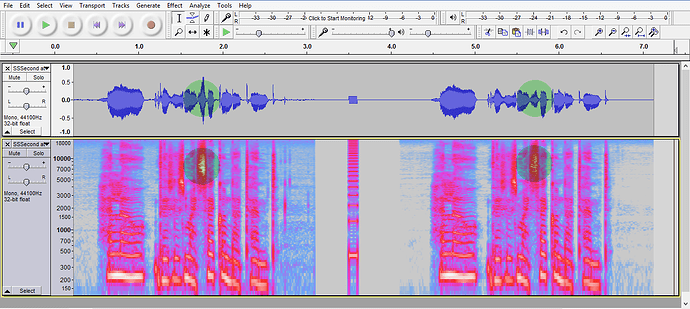Hello everybody, happy new year!
I built a recording booth at home to eliminate echo and recorded my voice. I use just a tiny bit of noise reduction on Audacity, but that’s all.
Can you listen to my demo and tell me what you think of the sound quality? Any other editing you think I should be applying?
Demo link: https://sndup.net/4vj
Thanks!
That link does not work for me … “404 Not Found”
Dead link for me too.
You can upload a short sample (just a few seconds) in WAV format, directly to the forum. See: https://forum.audacityteam.org/t/how-to-post-an-audio-sample/29851/1
(for questions about sound quality, we just need to hear a short, representative sample in a high quality format - WAV is preferred.
And you should post with no effects, filters or corrections. If we do find anything wrong, there’s no way to know if it’s your voice or your corrections.
Koz
Hi guys, sorry about the dead link. Here is a wav attachment - without any editing at all.
I would like to know what you think of the quality, if I can improve this before applying editing.
Also what editing would you apply with Audacity to make it as good as it gets.
Thank you so much!
It’s really close to submission quality, but you have background noise that is too loud.
I boosted the noise intentionally to make it easier to hear.
What in your studio can make that noise? Air Conditioning, Room Fans, Computer Noises? There’s actually two noises in there. One is a gentle shshsh rain in the trees. I don’t care about that one, but the other is a hard MMMMMMM sound that electric motors make.
Post Production processing filters and effects all harm your voice. You should get rid of that hum in your room.
If you post another voice test, do it to this format.
http://www.kozco.com/tech/audacity/TestClip/Record_A_Clip.html
You can use your own words. You don’t have to use the words in that post.
Hold your breath is important. Room noise by itself is needed for the testing software and ACX. If you listen carefully to your current post, you can hear lip smacks and other noises between words and at the ends of the file. You can do that in real life if you want, but then you have to go back later and remove them from the file before you submit. It can take forever. Much better not to make them in the first place.
Koz
IMO the main problem is excessive sibilance: the “s” sounds are too loud.
There is a free plugin for Audacity which will fix the problem: a de-esser.
Step #1. RMS Normalize the audio to -19dB.
Step #2. Apply these de-esser pluging settings …
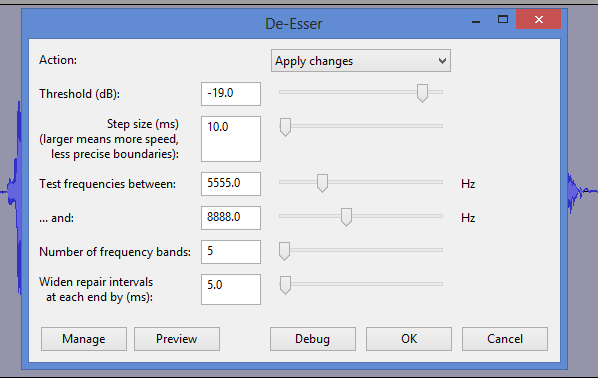
@koz - thanks a lot - I think i might have found the mmmmmmmm culprit ![]() Could have been my aquarium filter. I turned it off. Can you listen to the new demo and tell me if you can hear the noise now? I also held my breath.
Could have been my aquarium filter. I turned it off. Can you listen to the new demo and tell me if you can hear the noise now? I also held my breath.
@Trebor - thanks! Do you think I am the one making too loud s noises? I think my s sounds very whistling, I am training myself to make it sound smoother.
I think so too. De-esser plugins can cure it … De-essing - Wikipedia
IMO excessive-sibilance is not fixable by attempting change the way you speak.
Do you hear the noise now?
No. The background noise is perfect and the file, just as you posted it and after mastering, passes ACX Check easily. No noise reduction needed. You got lucky. Many home readers search for weeks (like me) to find their room noises.
Both of your posts have been in stereo, two blue waves one above the other. You can do that… and ACX will accept it… but it’s recommended you do work in Mono, one blue wave.
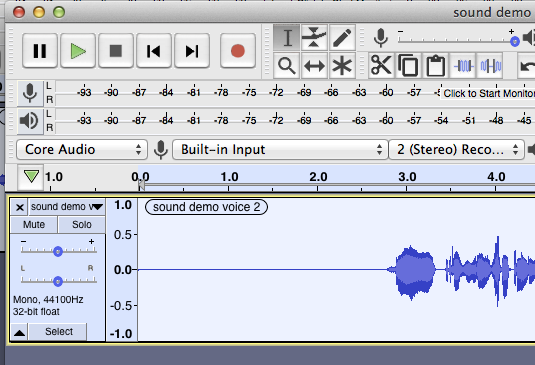
I got there from your post by Tracks > Mix > Mix Stereo down to Mono.
See on the left where it says “Mono?” I didn’t just cut off one of the two waves. I used that tool to carefully mix them. That also has the advantage of making the noise even quieter.
I used the three mastering tools from here.
That’s the exhaustive publication on mastering, but the three tools are down a bit under “Process.” The tools should all be used and in that order. They were designed to do their job without harming your voice.
ACX uses a two-step process to accept your work. The first step is “The Robot” which tests your technical quality about the same way I did it with the Audacity ACX Check plugin.
But the second test is more magic. Human Quality Control means a real person listens to your work. That’s where your harsh SS sounds are going to be a problem.
“Hello, thiSS is my SSecond attempTT.”
That’s not an announcing technique. Your microphone is doing that. The microphone makers think that sounds more “professional.” It makes my ears hurt.
There are tools to help. See Trebor, above.
Koz
I am the one making too loud s noises?
If I was really doing my job, I would make a special polyester/wool blend sock that fits over your microphone to prevent Essing right at the beginning.
Koz
There’s a free DeClicker plugin in at the bottom of the post where the free DeEsser plugin is.
Store-bought de-esser & de-clicker plugins are available, they can be faster than Paul-L’s freebies, but can be costly.
Thank you Trebor and Koz for the great tips. This is actually a test for my first production that needs to meet ACX requirements and you gave me a lot of tips without me even asking specifically about it!
To be honest, I can hardly hear any difference between the before and after deesser voice samples. Probably my ear is not trained enough :-/
Also, why would I want to mix the 2 stereo tracks or even record in mono? Won’t that result in the sound coming only from one of the two speakers or headphones of the listener? What am I not understanding here?
Last but not least, how do I make sure that I have set up my hardware and Audacity right before I actually start recording, so that I ensure I will pass ACX technical requirements? What does this really mean?
Peaks no louder than -3dB.
RMS (performance loudness) between -18dB and -23dB.
The whistling esses are between 6kHz & 9kHz.
It’s possible your headphones/speakers are not accurately reproducing those high-frequencies.
It’s possible to visually tell from the waveform that the esses are too strong: they are taller than the other parts …
.
Your two “stereo” tracks are perfectly identical: a/k/a “dual-mono”.
The duplication just creates a larger audio file without any audible difference.
You can set Audacity to record in mono in preferences …
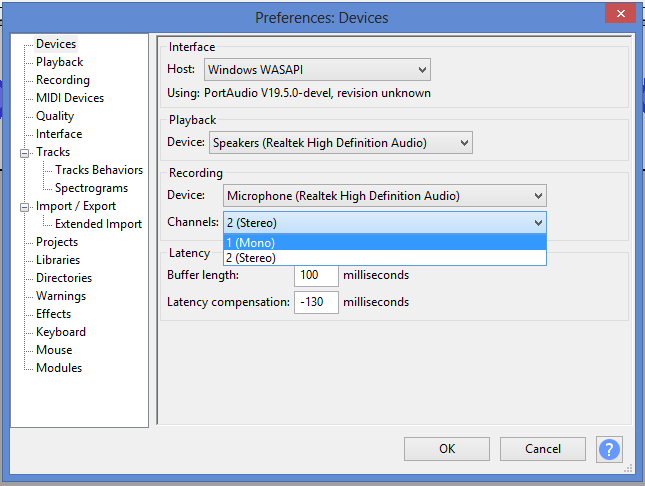
If your microphone is mono you can only record in mono. This is not a problem: ACX prefer mono recordings.
Switch to viewing the waveform the db scale …

ACX specification require no peak louder than -3dB. Audcaity’s limiter can knock down any loud peaks.
Thanks, I may not hear it but at least I can see it very clearly ![]()
Yes, my mic was recording in mono until I deliberately made Audacity to record stereo because the sound was coming only from one speaker / headphone. Why would I want that? confused
Understood, and what about RMS?
Thank you!
RMS is an average value for volume over the selected audio,
as opposed to peak volume which is the loudest moment.
There are various tools which can be used to measure RMS volume in Audacity …
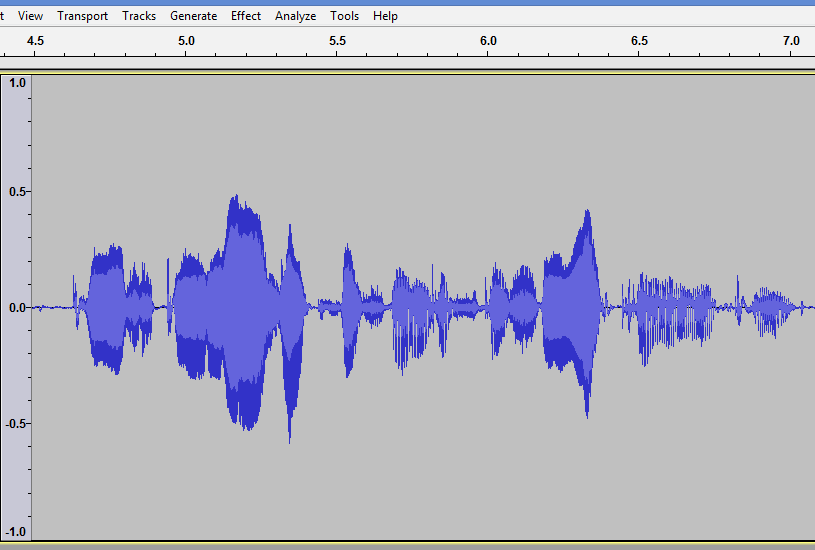
Audacity does not come with “ACX Check” installed: it’s a plugin which you have to install.
OK, so if I make a test and do not meet the requirement does it mean I have to adjust the volume of the mic on the preamp?
Adjust the preamp for the highest signal-to-noise***** ratio.
Then use the Audacity tools, (e.g. “RMS Normalize” & limiter), to make the audio comply with ACX specifications.
[ ***** The noise-level on your audio is already good,
the optimum preamp gain setting will be close to what you’ve got it set at now ].
http ://wiki.audacityteam.org/wiki/Nyquist_Analyze_Plug-ins#ACX_Check
Perfect, thanks everybody for the amazing help, I am now actually ready to start recording my first ACX project!
So if I understand right if I record in mono my final mp3 output will actually be heard only from one speaker and ACX will encode it themselves so that the listener sounds it from both their headphones, right?
